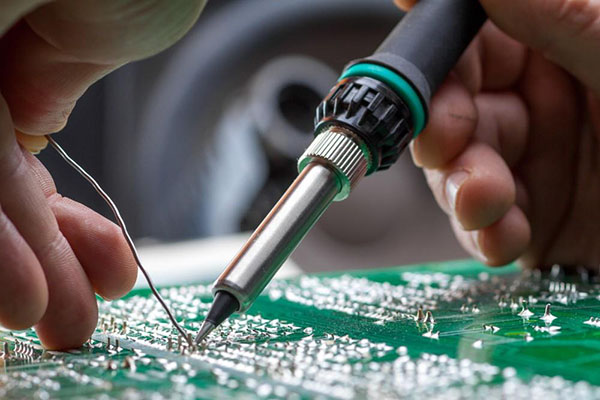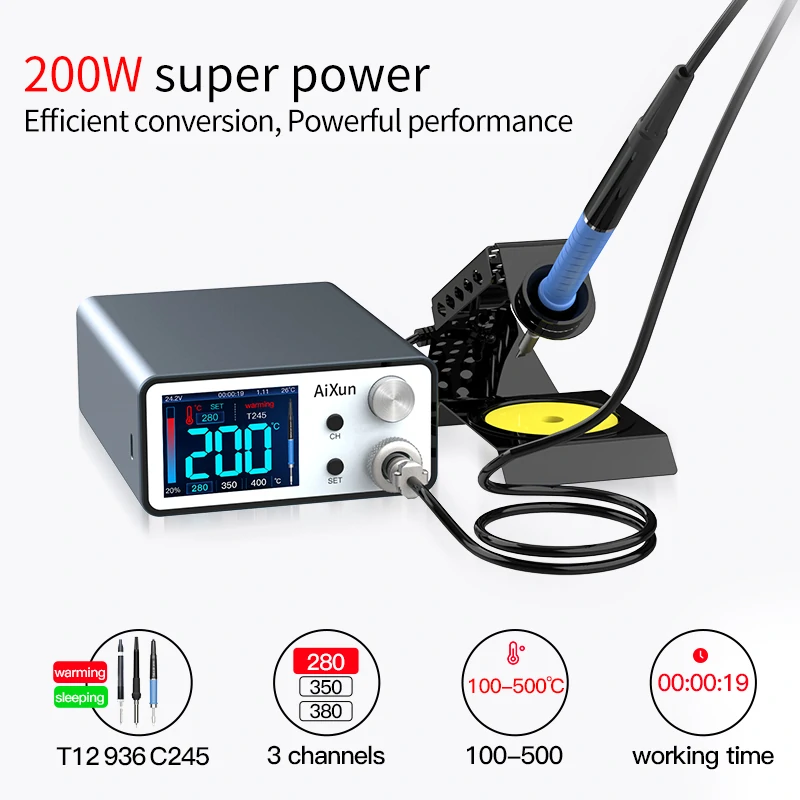
Soldering is a craft that demands precision, and the right tools can make all the difference. In the world of soldering, one crucial tool stands out—the temperature-controlled soldering station. Whether you're an electronics enthusiast or a professional in the field, understanding the significance of temperature control in soldering is key. This article explores the role of temperature control in soldering and the importance of having the right equipment for the job.

A temperature-controlled soldering station is a specialized tool used in precision soldering tasks, allowing users to adjust and maintain the soldering tip's temperature within a specific range. It features temperature stability, digital temperature display, safety features, and compatibility with various soldering tips, making it ideal for electronics and precision soldering work.

The adjustable temperature range of a soldering station can vary depending on the make and model of the station. However, most soldering stations designed for electronics work typically offer a temperature range that spans from around 200°C (392°F) to 480°C (896°F) or even higher.
This range allows users to select the specific temperature suitable for their soldering tasks, as different components and solder types may require different temperatures for proper soldering. It's important to refer to the user manual or specifications of your specific soldering station to determine its exact temperature range and adjustability.
The temperature of a soldering station is typically controlled through a dedicated temperature control knob, button, or digital interface on the station itself. Here are the general steps to control the temperature of a soldering station:
Power On the Soldering Station: Ensure the soldering station is properly plugged in and turned on. Some stations have an on/off switch, while others may turn on automatically when plugged in.
Set the Desired Temperature: Use the temperature control knob, button, or digital interface to select the temperature you need for your soldering task. The temperature is usually displayed on a digital screen or analog dial.
Wait for the Station to Reach Temperature: Soldering stations have a built-in heating element that warms up to reach the set temperature. You'll typically see an indicator light or display that shows when the station is heating up. Wait for it to reach the desired temperature.
Soldering: Once the station has reached the set temperature, you can start soldering. The station will maintain the selected temperature during your soldering work.
Adjust as Needed: If you find that the temperature needs adjustment during your work, you can use the control knob or interface to make changes. It's important to allow the station some time to stabilize at the new temperature setting before soldering again.
Power Off When Finished: When you're done soldering, power off the soldering station. Some stations may have a standby or sleep mode to conserve energy when not in use.
Clean the Soldering Iron Tip: After turning off the station, it's a good practice to clean the soldering iron tip with a damp sponge or brass wire tip cleaner to remove any excess solder and oxidation.
Whether you need an adjustable temperature soldering station or not depends on the type of soldering work you do and your level of expertise. Here are some considerations to help you determine if an adjustable temperature soldering station is necessary for your needs:
Type of Projects:
If you primarily work on simple soldering tasks with consistent materials and components, a basic soldering iron with a fixed temperature may suffice.
Materials and Components:
If you work with a variety of materials and components, especially heat-sensitive ones like electronics, having an adjustable temperature soldering station is highly recommended. Different materials and components may require different soldering temperatures for optimal results.
Precision Requirements:
Adjustable temperature soldering stations provide precise temperature control, which is essential for tasks that demand accuracy, such as surface-mount soldering (SMD) or fine-pitch components.
Versatility:
If you anticipate working on a wide range of projects, from basic to complex, having an adjustable temperature soldering station offers versatility. You can adjust the temperature to suit the specific requirements of each project.
Quality and Reliability:
Adjustable temperature soldering stations often offer better build quality and more consistent performance than fixed-temperature soldering irons. This can lead to more reliable and durable solder joints.
Skill Level:
For beginners, adjustable temperature soldering stations can provide a learning curve as you become familiar with selecting the right temperature for different tasks. However, this learning experience can be valuable in the long run.

Temperature control is the secret weapon in achieving perfect solder joints. Whether you're soldering delicate electronic components or tackling intricate projects, having the ability to adjust and maintain the soldering tip's temperature within a specific range is essential. This level of control ensures that you can work with different materials and components, each requiring a specific soldering temperature for optimal results.
While basic soldering irons with fixed temperatures have their place, they may not provide the versatility needed for precision work. Enter the temperature-controlled soldering station, a game-changer for professionals and hobbyists alike. These stations offer stability, accuracy, and control, allowing you to fine-tune the temperature to match the unique requirements of your soldering task.
Go ahead and check out more soldering stations on AiXun
 WhatsApp
WhatsApp